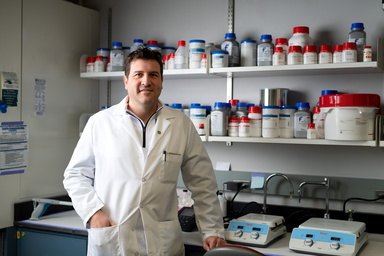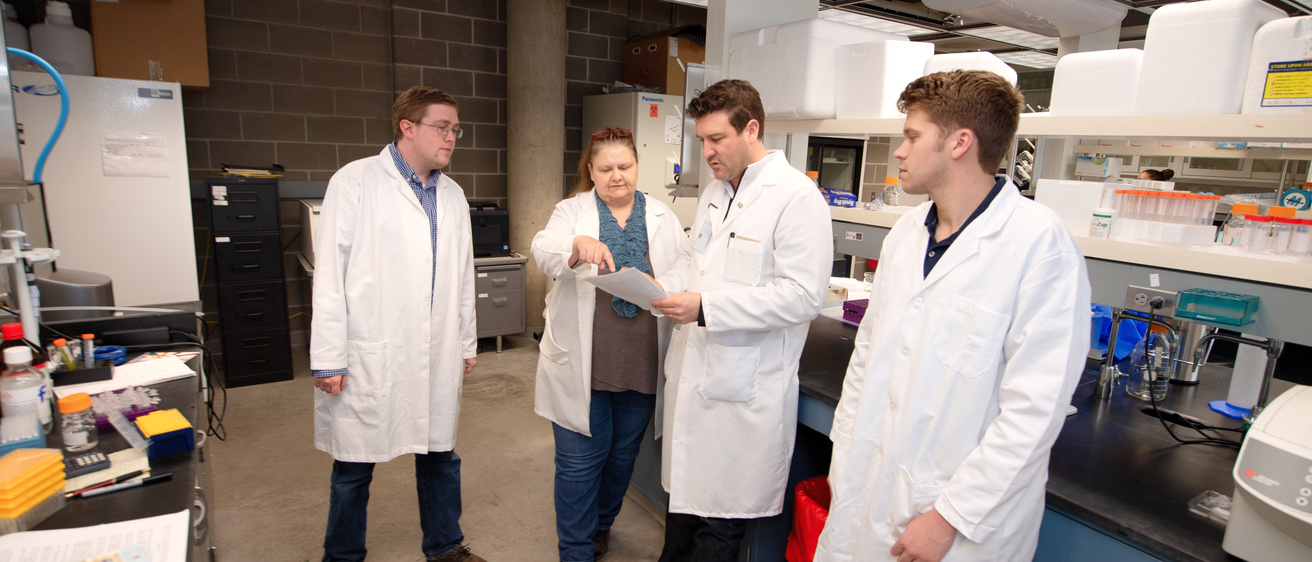College of Pharmacy faculty member Ethan Anderson and his collaborators are working on a promising new molecule that could help reverse the metabolic and cardiovascular disorders associated with obesity.

The findings were recently published in The Journal of Clinical Investigation. Anderson’s laboratory collaborated with labs across the United States and Italy.
We all have a very small protein—called carnosine—in our muscles, heart and brain that can counteract the type of cellular damage that contributes to diseases such as Type 2 diabetes, fatty liver disease, coronary artery disease, and heart failure in obese people. We get a substantial amount of carnosine from our diets. Chicken white meat, in particular, contains high levels of carnosine. However, human bodies also have an enzyme that breaks down carnosine and prevents this molecule from doing its job. As we age, carnosine levels decrease in our bodies, which is one of many ways in which old age predisposes us to disease.
The new molecule created by the researchers is a modified version of carnosine that resists the enzyme (“carnosinase”) that usually breaks it down.
“Since it’s essentially the same structure as the natural carnosine, this new molecule, Carnosinol, appears to have very little to no downside such as toxicity, and can be administered in drinking water because it is tasteless,” Anderson said. “Obese rodents in our study given Carnosinol had reversals in metabolic syndrome and fatty liver disease.”
The new molecule also restored insulin sensitivity in mice, which means that—after being put through more trials—it might be proven effective as a drug for pre-diabetes in obese patients. Unpublished findings from this study also demonstrated that Carnosinol greatly improved the structure and metabolic capacity of the heart in obese animals, Anderson said.
Anderson is an associate professor in the Department of Pharmaceutical Sciences and Experimental Therapeutics. He is the lead and senior author on the scientific paper.
